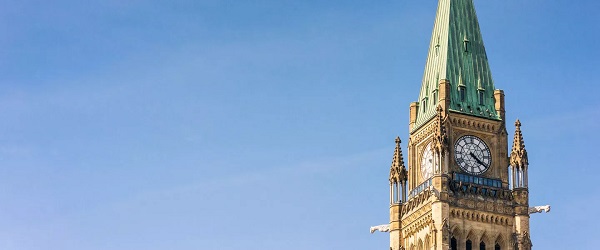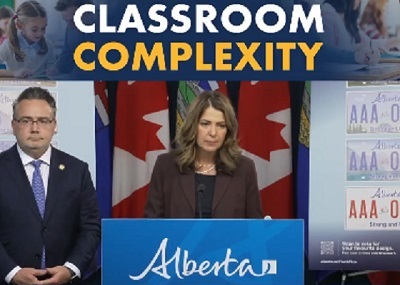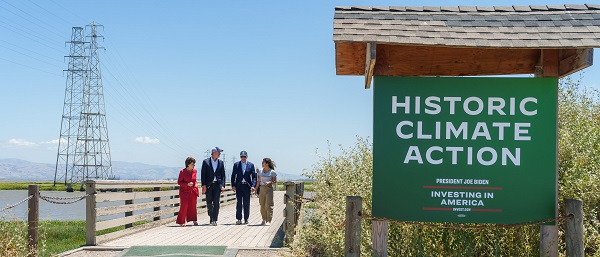Fraser Institute
Trudeau’s legacy includes larger tax burden for middle-class Canadians

From the Fraser Institute
By Jake Fuss and Grady Munro
On Monday outside Rideau Cottage in Ottawa, after Prime Minister Justin Trudeau told Canadians he plans to resign, a reporter asked Trudeau to name his greatest accomplishments. In response, among other things, Trudeau said his government “reduced” taxes for the “middle class.” But this claim doesn’t withstand scrutiny.
After taking office in 2015, the Trudeau government reduced the second-lowest personal income tax rate from 22.0 per cent to 20.5 per cent—a change that was explicitly sold by Trudeau as a tax cut for the middle class. However, this change ultimately didn’t lower the amount of taxes paid by middle-class Canadians. Why?
Because the government simultaneously eliminated several tax credits—which are intended to reduce the amount of income taxes owed—including income splitting, the children’s fitness credit, children’s arts tax credit, and public transit tax credits. By eliminating these tax credits, the government helped simplify the tax system, which is a good thing, but it also raised the amount families pay in income taxes.
Consequently, most middle-income families now pay higher taxes. Specifically, a 2022 study published by the Fraser Institute found that nearly nine in 10 (86 per cent) middle-income families (earning household incomes between $84,625 and $118,007) experienced an increase in their federal personal income taxes as a result of the Trudeau government’s tax changes.
The study also found that other income groups experienced tax increases. Nearly three-quarters (73 per cent) of families with a household income between $54,495 and $84,624 paid higher taxes as a result of the tax changes. And across all income groups, 61 per cent of Canadian families faced higher personal income taxes than they did in 2015.
The Trudeau government also introduced a new top tax bracket on income over $200,000—which raised the top federal personal income tax rate from 29 per cent to 33 per cent—and other tax changes that increased the tax burden on Canadians including the recent capital gains tax hike. Prior to this hike, investors who sold capital assets (stocks, second homes, cottages, etc.) paid taxes on 50 per cent of the gain. Last year, the Trudeau government increased that share to 66.7 per cent for individual capital gains above $250,000 and all capital gains for corporations and trusts.
According to the Trudeau government, this change will only impact the “wealthiest” Canadians, but in fact it will impact many middle-class Canadians. For example, in 2018, half of all taxpayers who claimed more than $250,000 of capital gains in a year earned less than $117,592 in normal income. These include Canadians with modest annual incomes who own businesses, second homes or stocks, and who may choose to sell those assets once or infrequently in their lifetimes (when they retire, for example). These Canadians will feel the real-world effects of Trudeau’s capital gains tax hike.
While reflecting on his tenure, Prime Minister Trudeau said he was proud that his government reduced taxes for middle-class Canadians. In reality, taxes for middle-class families have increased since he took office. That’s a major part of his legacy as prime minister.
Business
Federal Budget 2025: A responsible media would ensure Canadians know about the dismal state of federal finance

From the Fraser Institute
By Jake Fuss and Grady Munro
From 2014 to 2024, gross government debt (including federal, provincial and local governments) increased from 85.5 per cent of the economy (measured by GDP) to 110.8 per cent—a larger increase than any other G7 country. When debt grows faster than the economy, government finances are unsustainable.
Ahead of the Carney government’s long-awaited first budget scheduled for Nov. 4, a recent CBC commentary described the long-standing debate about the federal deficit and the state of federal finances as “something of a phoney war.” And that calls to balance the budget—expressed today and over the last decade—have lacked any serious discussion about the trade-offs between allowing deficits to persist versus balancing the budget.
While there’s certainly something to be said about the political theatre that regularly dominates the House of Commons—which we agree focuses too often on scoring political points instead of adequately assessing the merits of policy—it’s wrong to downplay concerns about the state of federal finances. Such concerns aren’t “phoney.”
Consider this. From 2014 to 2024, gross government debt (including federal, provincial and local governments) increased from 85.5 per cent of the economy (measured by GDP) to 110.8 per cent—a larger increase than any other G7 country. And federal gross debt increased from 53.0 per cent of the economy in 2014/15 to a projected 70.0 per cent in 2024/25. When debt grows faster than the economy, government finances are unsustainable. And the Carney government seemingly plans to continue this same approach.
In other words, the government plans to continue to spend more than it collects in revenue, continue to run massive deficits, and continue to rack up large amounts of debt.
Why should Canadians care?
Because the costs of government debt land squarely on their backs. For example, when government debt levels rise, the cost of debt interest often also rises. This year the federal government will spend a projected $54.5 billion on debt interest costs—equivalent to what it sends to the provinces for health care. Moreover, when governments borrow money, they can help drive up the cost of borrowing by increasing demand for the limited pool of savings that both government and the private sector compete for—making it more expensive for a family to take out a mortgage or businesses to attract investments. And to pay for today’s debt accumulation, governments in the future may raise taxes—a burden that will fall disproportionately on younger generations.
Again, given this alarming deterioration in the state of government finances over the last decade and the costs it imposes on Canadians, there’s nothing disingenuous about calling for more fiscal discipline from Ottawa.
Of course, getting federal finances back in order is no small task—the Trudeau government’s forays into areas of provincial jurisdiction (which carry huge price tags), combined with Carney’s massive new spending commitments for defence and other programs, mean the government cannot balance the budget without significant trade-offs. In the past, the federal government has overcome similar fiscal circumstances by committing to balance the budget and outlining a clear plan to achieve this goal. The Carney government should heed these lessons and apply them in its upcoming budget.
Alberta
Alberta taxpayers should know how much their municipal governments spend

From the Fraser Institute
By Tegan Hill and Austin Thompson
Next week, voters across Alberta will go to the polls to elect their local governments. Of course, while the issues vary depending on the city, town or district, all municipal governments spend taxpayer money.
And according to a recent study, Grande Prairie County and Red Deer County were among Alberta’s highest-spending municipalities (on a per-person basis) in 2023 (the latest year of comparable data). Kara Westerlund, president of the Rural Municipalities of Alberta, said that’s no surprise—arguing that it’s expensive to serve a small number of residents spread over large areas.
That challenge is real. In rural areas, fewer people share the cost of roads, parks and emergency services. But high spending isn’t inevitable. Some rural municipalities managed to spend far less, demonstrating that local choices about what services to provide, and how to deliver them, matter.
Consider the contrast in spending levels among rural counties. In 2023, Grande Prairie County and Red Deer County spent $5,413 and $4,619 per person, respectively. Foothills County, by comparison, spent just $2,570 per person. All three counties have relatively low population densities (fewer than seven residents per square kilometre) yet their per-person spending varies widely. (In case you’re wondering, Calgary spent $3,144 and Edmonton spent $3,241.)
Some of that variation reflects differences in the cost of similar services. For example, all three counties provide fire protection but in 2023 this service cost $56.95 per person in Grande Prairie County, $38.51 in Red Deer County and $10.32 in Foothills County. Other spending differences reflect not just how much is spent, but whether a service is offered at all. For instance, in 2023 Grande Prairie County recorded $46,283 in daycare spending, while Red Deer County and Foothills County had none.
Put simply, population density alone simply doesn’t explain why some municipalities spend more than others. Much depends on the choices municipal governments make and how efficiently they deliver services.
Westerlund also dismissed comparisons showing that some counties spend more per person than nearby towns and cities, calling them “apples to oranges.” It’s true that rural municipalities and cities differ—but that doesn’t make comparisons meaningless. After all, whether apples are a good deal depends on the price of other fruit, and a savvy shopper might switch to oranges if they offer better value. In the same way, comparing municipal spending—across all types of communities—helps Albertans judge whether they get good value for their tax dollars.
Every municipality offers a different mix of services and those choices come with different price tags. Consider three nearby municipalities: in 2023, Rockyview County spent $3,419 per person, Calgary spent $3,144 and Airdrie spent $2,187. These differences reflect real trade-offs in the scope, quality and cost of local services. Albertans should decide for themselves which mix of local services best suits their needs—but they can’t do that without clear data on what those services actually cost.
A big municipal tax bill isn’t an inevitable consequence of rural living. How much gets spent in each Alberta municipality depends greatly on the choices made by the mayors, reeves and councillors Albertans will elect next week. And for Albertans to determine whether or not they get good value for their local tax dollars, they must know how much their municipality is spending.
-

 espionage2 days ago
espionage2 days agoBreaking: P.E.I. Urges RCMP Probe of Alleged Foreign Interference, Money Laundering
-

 Business20 hours ago
Business20 hours agoCanada has an energy edge, why won’t Ottawa use it?
-

 Alberta2 days ago
Alberta2 days agoPremier Smith addresses the most important issue facing Alberta teachers: Classroom Complexity
-

 Business20 hours ago
Business20 hours agoFederal Budget 2025: A responsible media would ensure Canadians know about the dismal state of federal finance
-

 Alberta2 days ago
Alberta2 days agoAlberta taxpayers should know how much their municipal governments spend
-

 Business1 day ago
Business1 day agoCutting Red Tape Could Help Solve Canada’s Doctor Crisis
-

 Daily Caller1 day ago
Daily Caller1 day agoTrump, Putin Agree On High-Stakes Meetings To Negotiate End To Ukraine War
-

 International8 hours ago
International8 hours agoPoland’s president signs new zero income tax law for parents with two children









